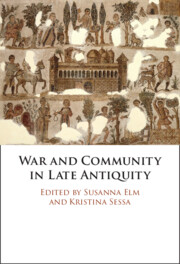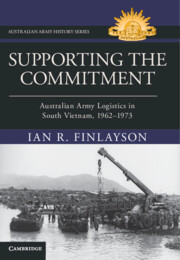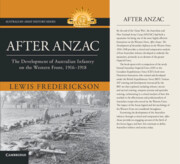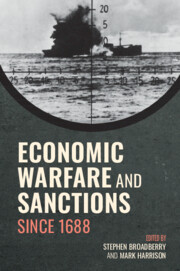Refine search
Actions for selected content:
15366 results in Military history
Embattled Belief
- Religion and the British Army from Korea to Afghanistan
- Coming soon
-
- Expected online publication date:
- June 2026
- Print publication:
- 31 May 2026
-
- Book
- Export citation

The Dum-Dum Bullet
- A Lethal History, 1850–1950
- Coming soon
-
- Expected online publication date:
- May 2026
- Print publication:
- 31 May 2026
-
- Book
- Export citation

The Fraying Bonds of Peace
- Economic Origins of the First World War
- Coming soon
-
- Expected online publication date:
- May 2026
- Print publication:
- 31 May 2026
-
- Book
- Export citation

The Fall of the Tang
- Gao Pian's Trials of Allegiance
- Coming soon
-
- Expected online publication date:
- March 2026
- Print publication:
- 31 March 2026
-
- Book
- Export citation
Building an Air Force
- The Air Corps and the Formation of US Airpower
- Coming soon
-
- Expected online publication date:
- March 2026
- Print publication:
- 31 March 2026
-
- Book
- Export citation

Understanding Modern Warfare
- Coming soon
-
- Expected online publication date:
- March 2026
- Print publication:
- 31 March 2026
-
- Textbook
- Export citation

Nursing Aids at War
- The Australian Army Medical Women's Service in the Second World War
- Coming soon
-
- Expected online publication date:
- February 2026
- Print publication:
- 28 February 2026
-
- Book
- Export citation

War and Community in Late Antiquity
- Coming soon
-
- Expected online publication date:
- February 2026
- Print publication:
- 28 February 2026
-
- Book
- Export citation

The Commander's Eyes and Ears
- Australian Army Combat Intelligence in the Cold War, 1945–1975
- Coming soon
-
- Expected online publication date:
- January 2026
- Print publication:
- 31 January 2026
-
- Book
- Export citation
Cold War Liberalism
- Power in a Time of Emergency
- Coming soon
-
- Expected online publication date:
- January 2026
- Print publication:
- 31 January 2026
-
- Book
- Export citation

Violence and Occupation
- The Red Army in the Balkans and Central Europe, 1944–1945
- Coming soon
-
- Expected online publication date:
- January 2026
- Print publication:
- 31 January 2026
-
- Book
- Export citation

Supporting the Commitment
- Australian Army Logistics in South Vietnam, 1962–1973
- Coming soon
-
- Expected online publication date:
- December 2025
- Print publication:
- 31 December 2025
-
- Book
- Export citation

After Anzac
- The Development of Australian Infantry on the Western Front, 1916–1918
- Coming soon
-
- Expected online publication date:
- December 2025
- Print publication:
- 17 December 2025
-
- Book
- Export citation

Economic Warfare and Sanctions Since 1688
- Coming soon
-
- Expected online publication date:
- December 2025
- Print publication:
- 18 December 2025
-
- Book
- Export citation

Protecting Women
- US Army Culture in the Second US–Seminole War and the US–Mexican War
- Coming soon
-
- Expected online publication date:
- November 2025
- Print publication:
- 11 December 2025
-
- Book
- Export citation
Contributors
-
- Book:
- Hunger Redraws the Map
- Published online:
- 01 November 2025
- Print publication:
- 20 November 2025, pp xiii-xiii
-
- Chapter
- Export citation
Copyright page
-
- Book:
- Hunger Redraws the Map
- Published online:
- 01 November 2025
- Print publication:
- 20 November 2025, pp iv-iv
-
- Chapter
- Export citation
8 - Food Hierarchies
-
-
- Book:
- Hunger Redraws the Map
- Published online:
- 01 November 2025
- Print publication:
- 20 November 2025, pp 231-258
-
- Chapter
- Export citation
Index
-
- Book:
- Hunger Redraws the Map
- Published online:
- 01 November 2025
- Print publication:
- 20 November 2025, pp 480-499
-
- Chapter
- Export citation
Figures
-
- Book:
- Hunger Redraws the Map
- Published online:
- 01 November 2025
- Print publication:
- 20 November 2025, pp vii-viii
-
- Chapter
- Export citation
